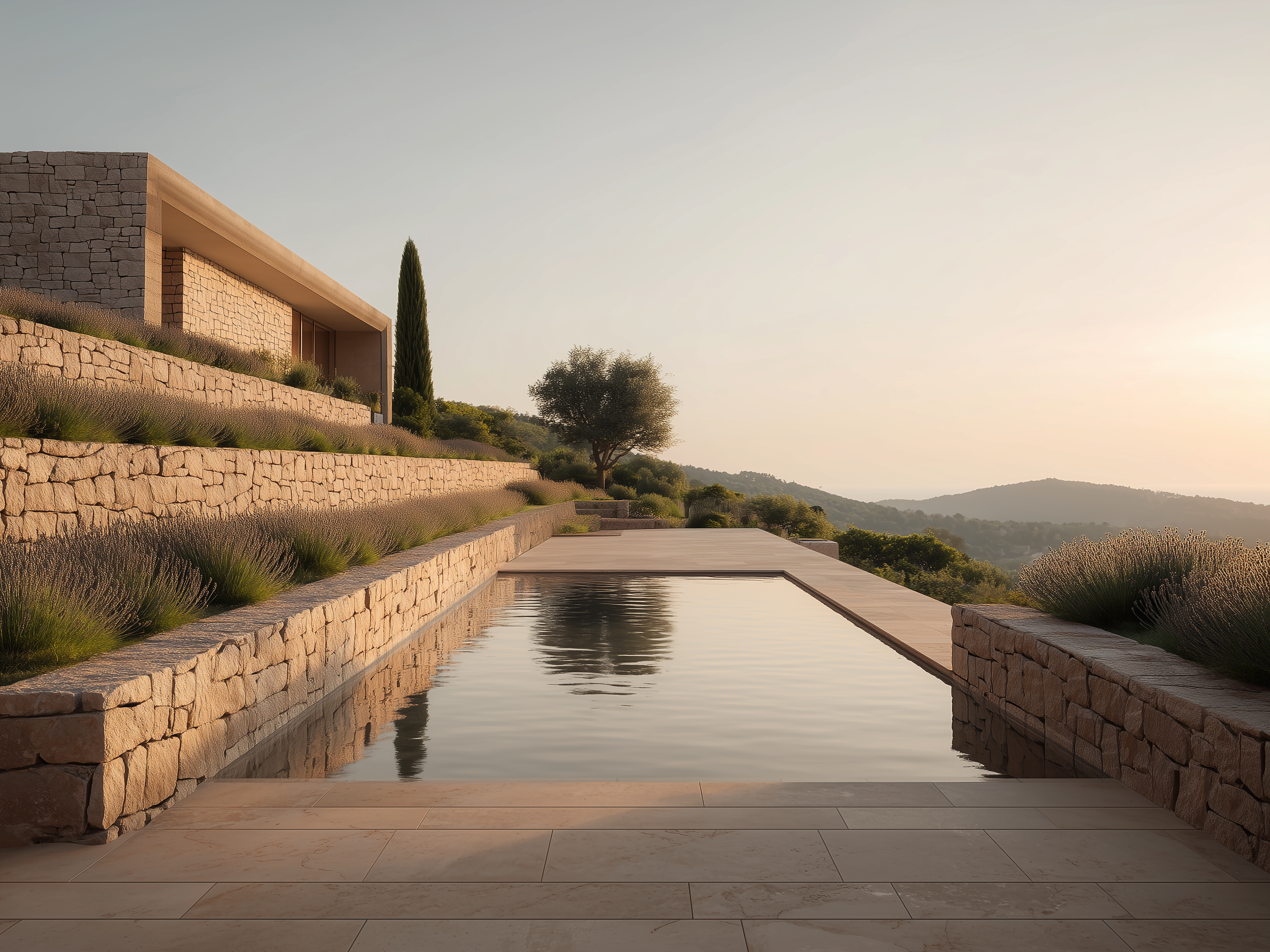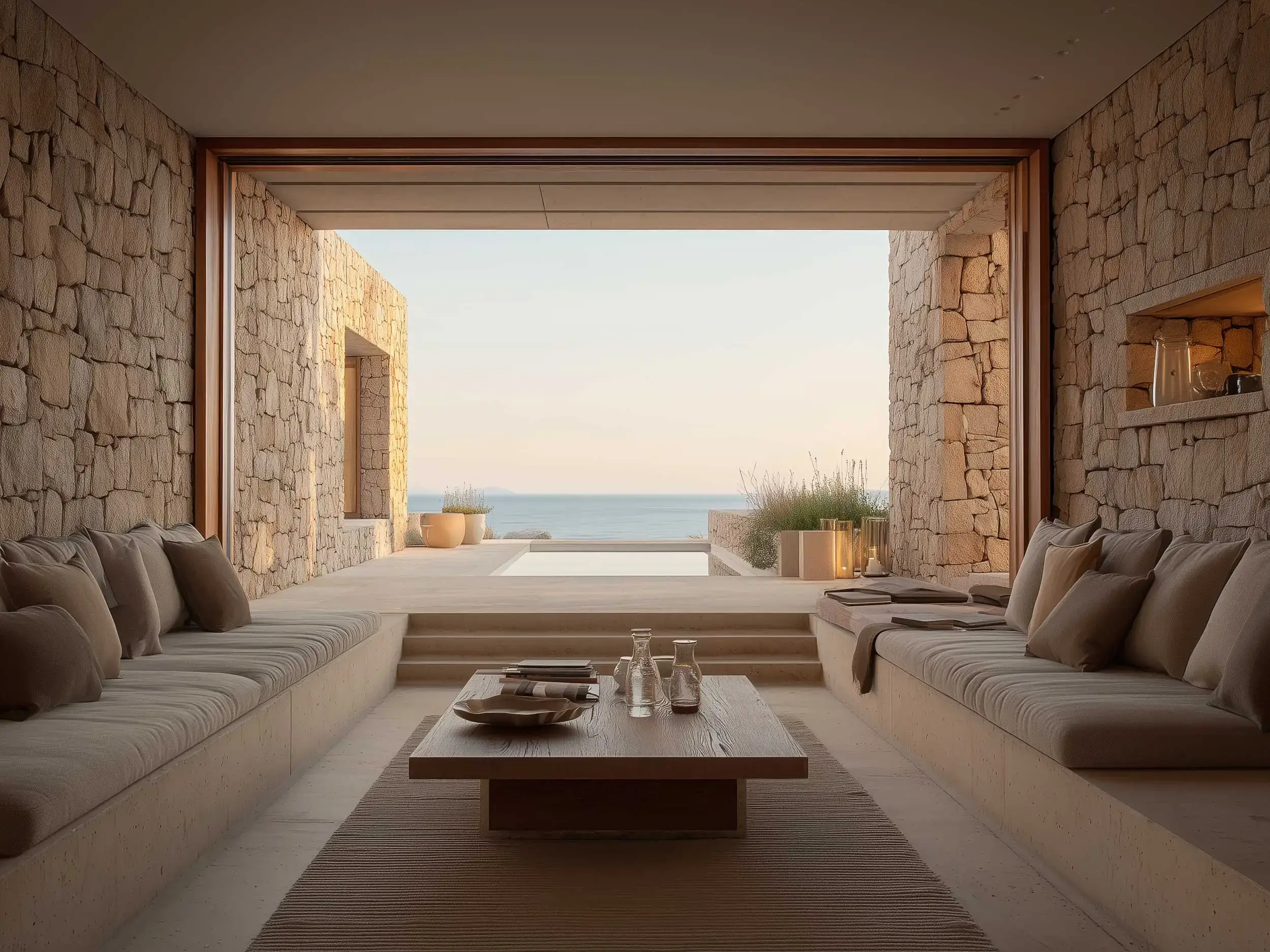The Aiguablava Heights
Location
Begur, Spain
Category
Residence
Photography
Fem Arquitectura
Year
2025
On the steep cliffs of Begur, where pine forests descend towards crystalline waters, The Aiguablava Heights rises as a discreet continuation of the land itself. The Costa Brava is defined by its rugged terrain—its terraces of stone, its sudden drops to the sea, and its long history of adaptation between man and nature. The residence takes its cue from this logic, emerging not as an object upon the slope but as part of it, aligned with the rhythms of geology and cultivation that have shaped Begur for centuries.
Each volume of the house is carefully placed to echo the terraces of dry stone that once ordered the land. The architecture settles into the hillside with humility, avoiding prominence while embracing permanence. By working with the contours of the terrain, the house becomes inseparable from it—an extension of slope, stone, and pine, rooted in the geography of Aiguablava.
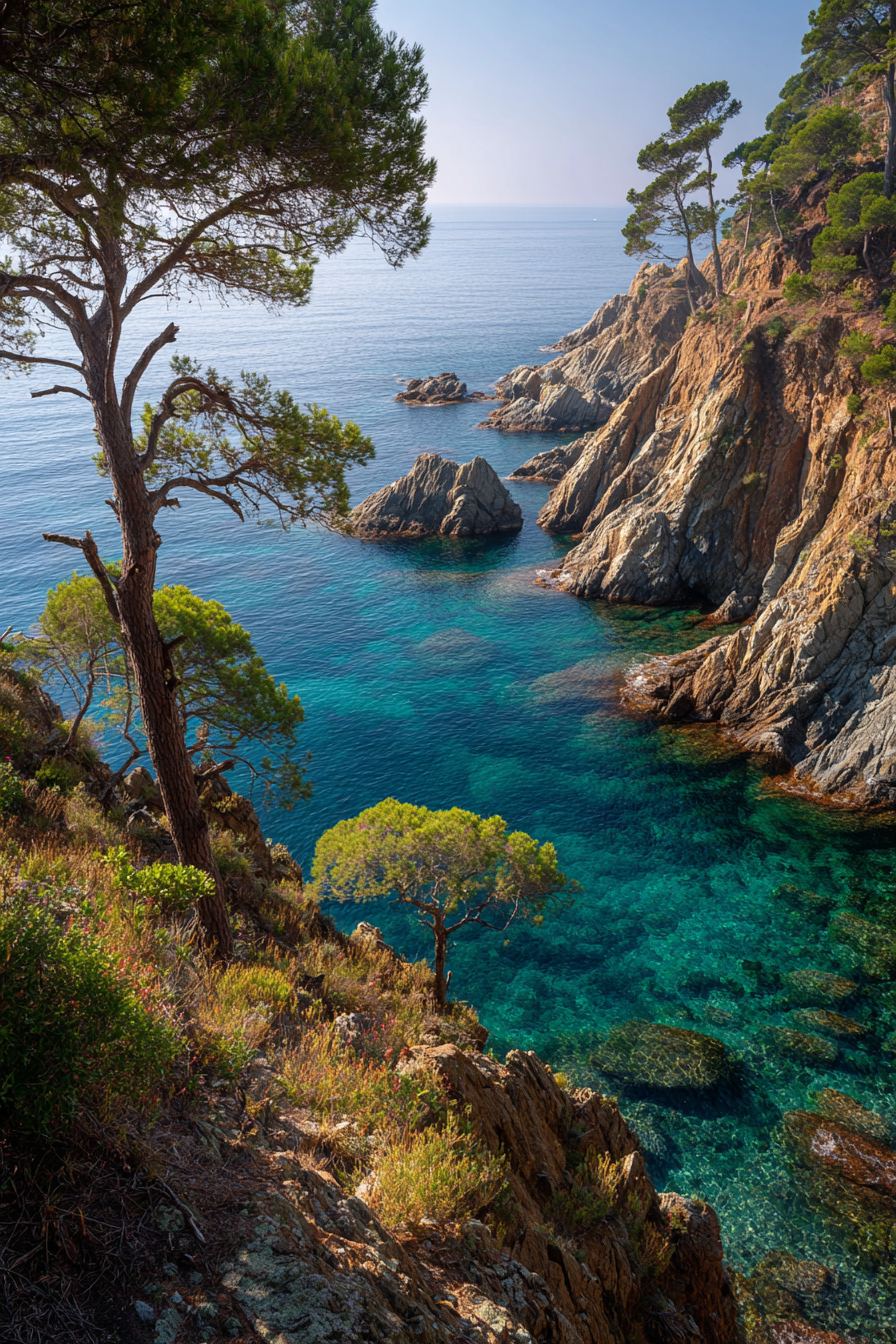
The raw cliffs of Aiguablava echo in the geometry of the villas, where architecture and landscape are conceived as inseparable.
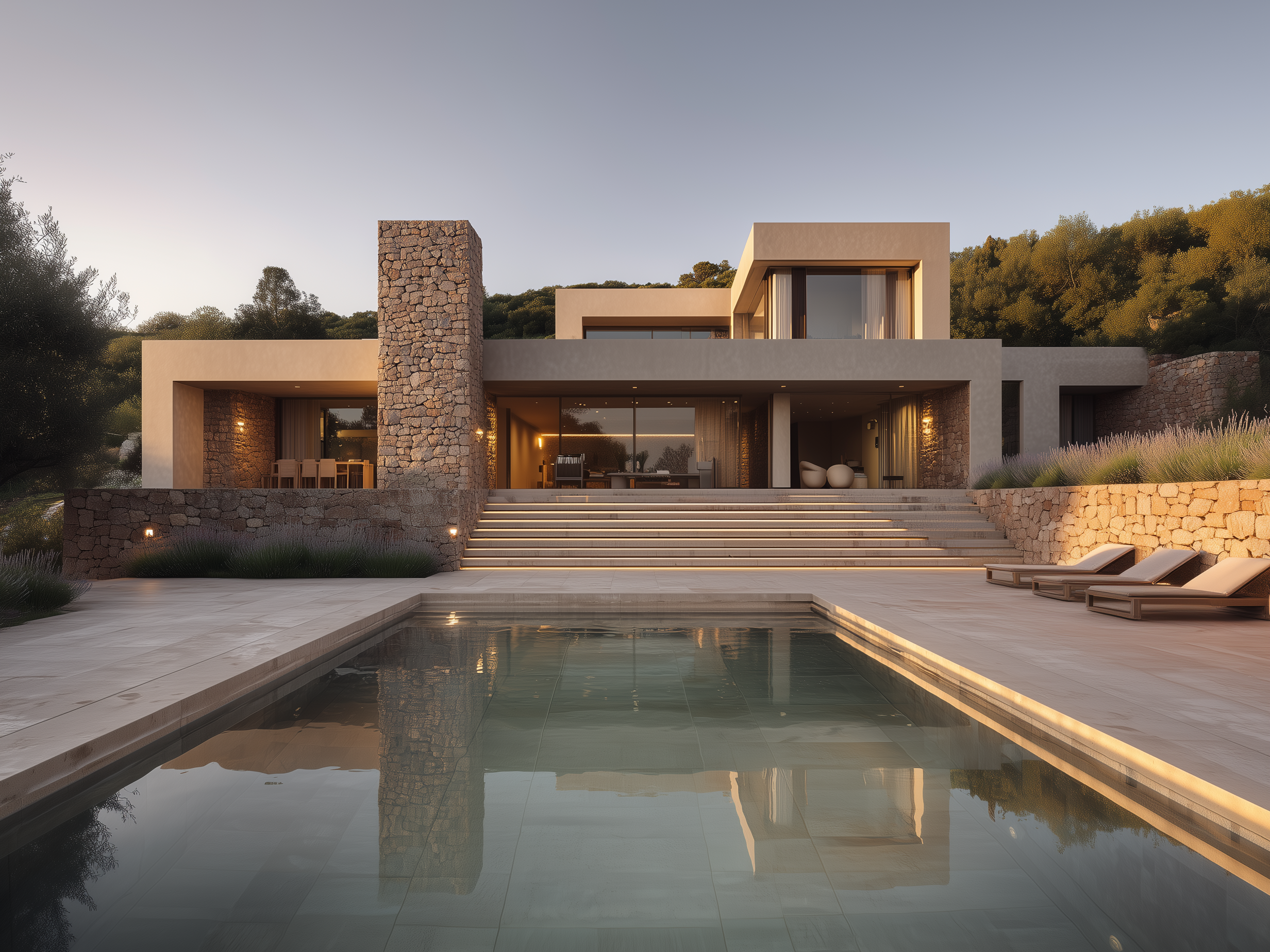
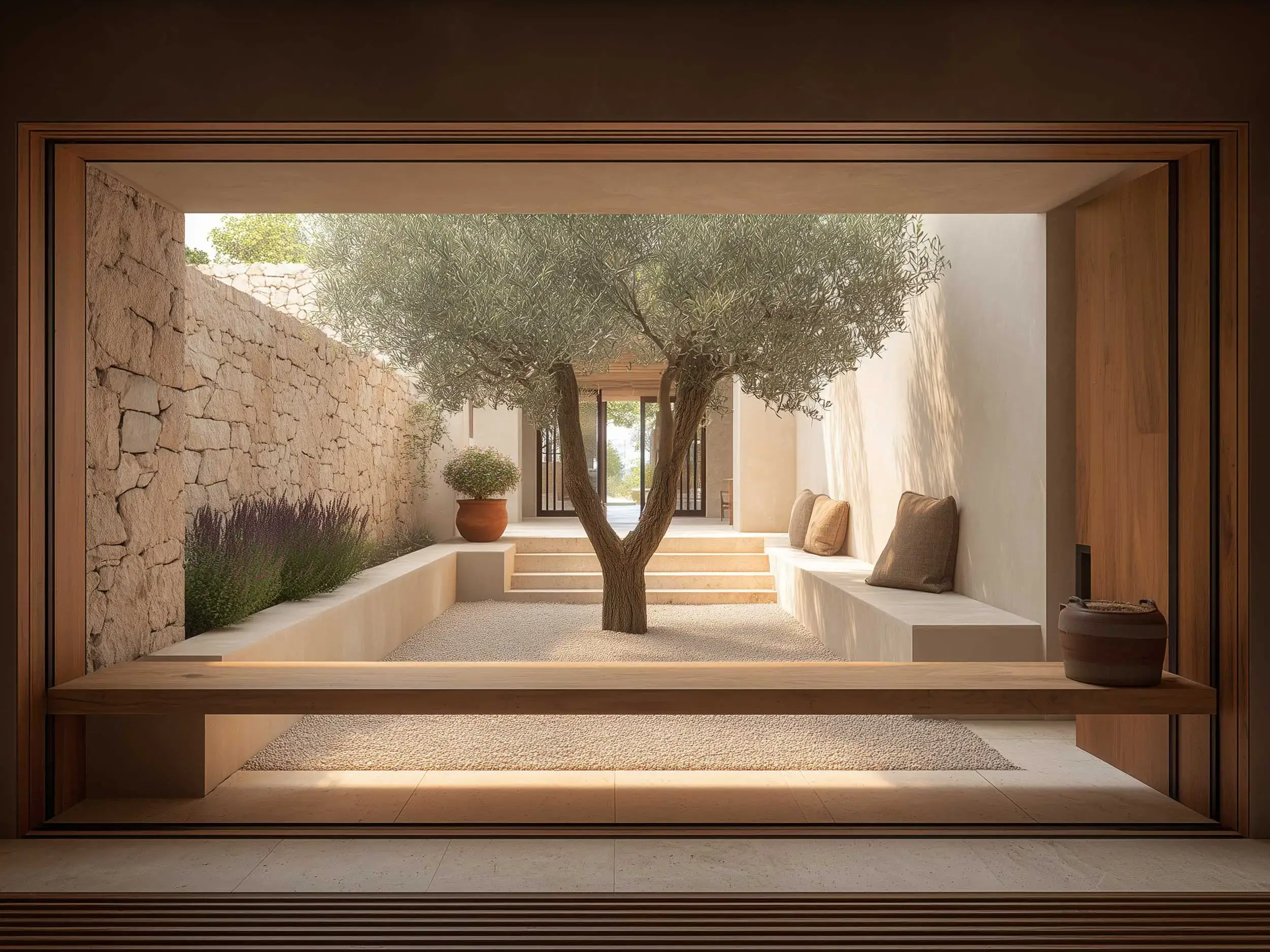
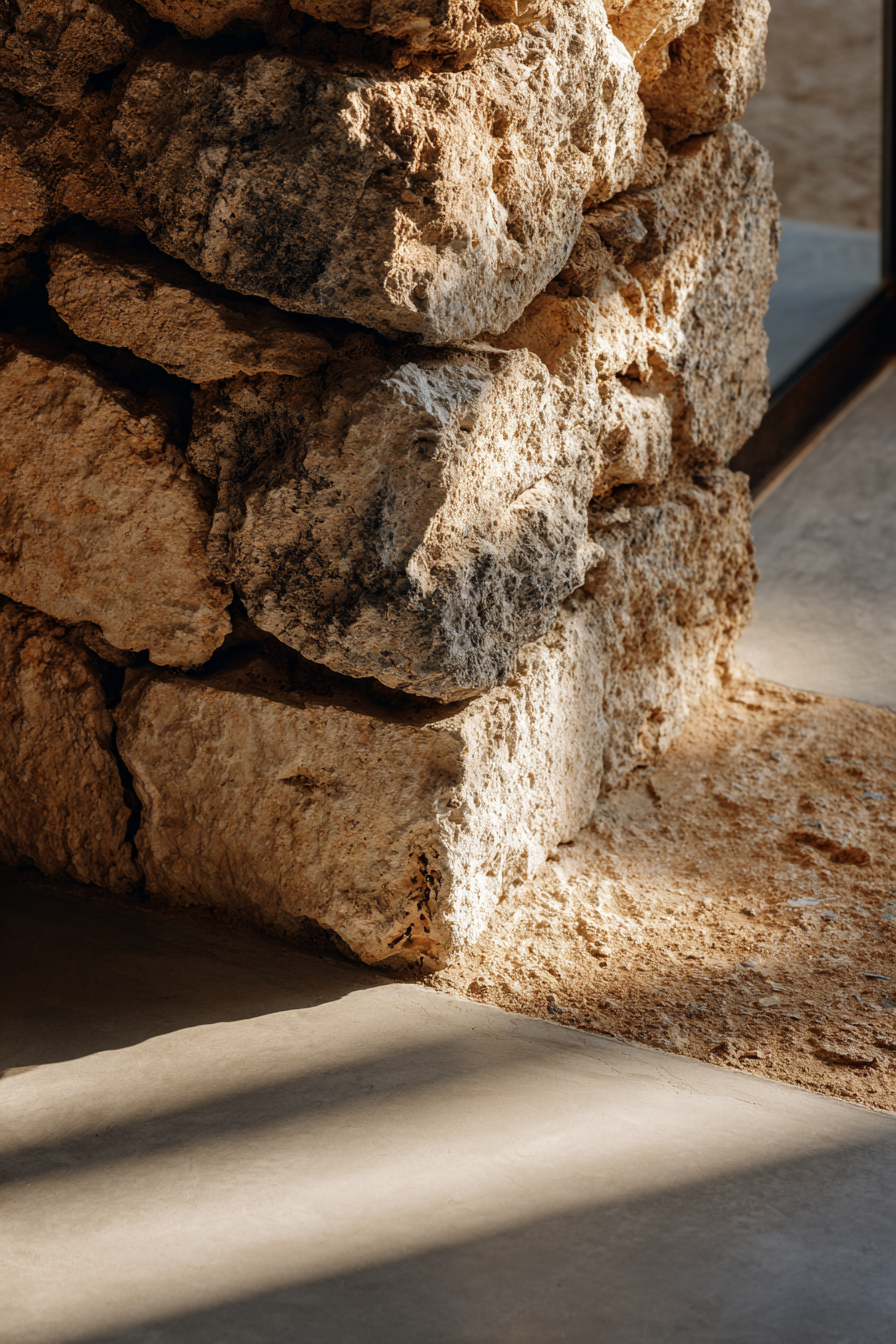
Rooted in the textures of the Costa Brava, the architecture finds its strength in a dialogue with the land, allowing material authenticity to define a sense of permanence.
Life in the Mediterranean is defined as much by shelter as by openness. At Aiguablava, the winds of the Tramontana carve through the hills, and the summer sun shines with intensity. The residence responds with patios and porches—spaces that temper the climate while blurring the line between interior and exterior. These courtyards become the core of daily life, providing natural ventilation, shade, and intimacy, while allowing the sea breeze to pass gently through.
Protected yet porous, the patios balance refuge with connection. Carefully framed openings reveal glimpses of the sea, the shifting horizon, or the dark green of the pines. Around them, native vegetation—olive, rosemary, lavender—reinforces the sense of continuity with the landscape, adding texture, fragrance, and the slow rhythm of growth to the architecture. The patios are not ornamental, but essential: instruments for living in harmony with a demanding and generous climate.
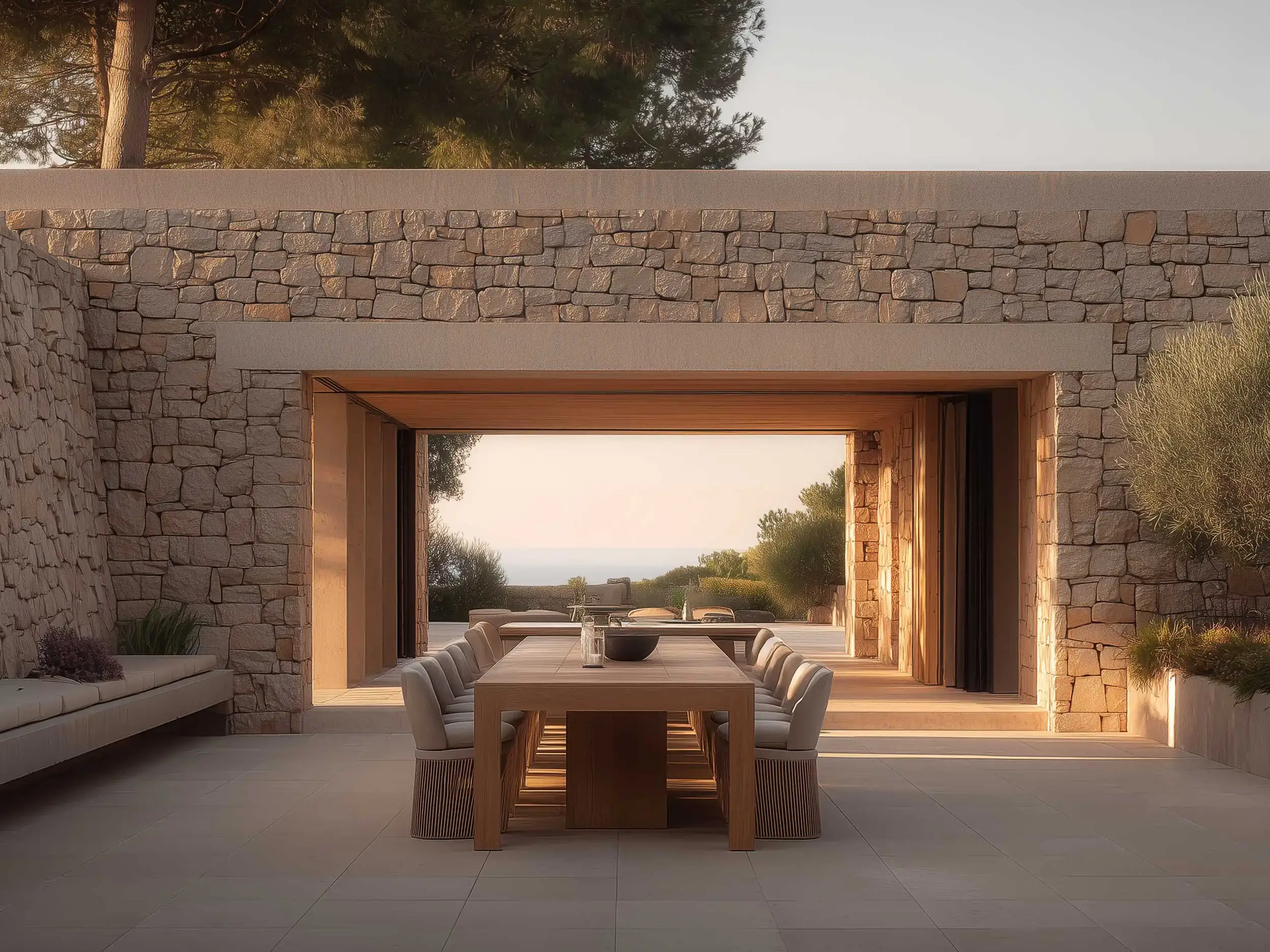
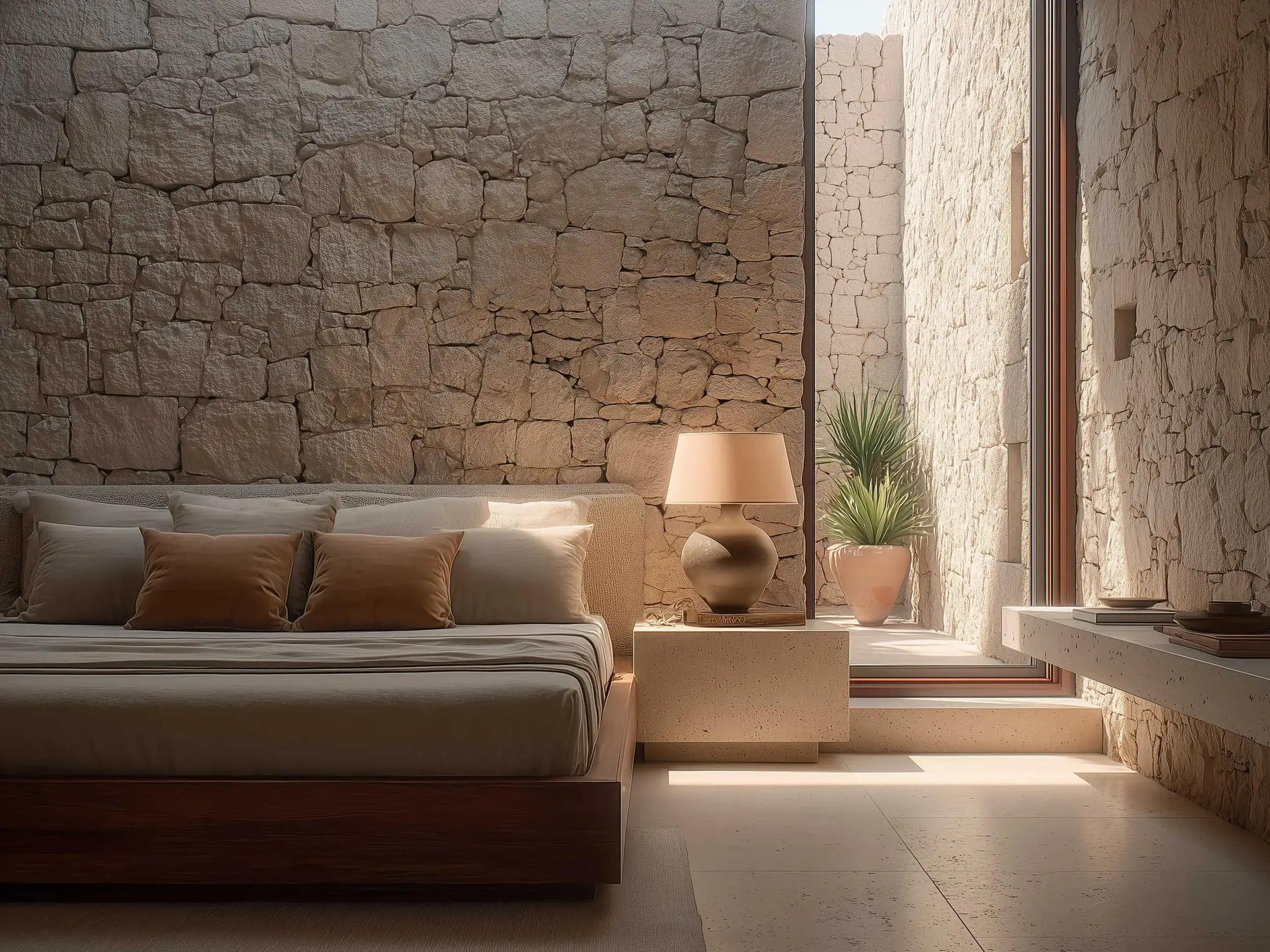
The architecture of The Aiguablava Heights is defined by restraint. Its palette is drawn directly from the land, translating the chromatic identity of the Costa Brava into form. Rough local stone clads the exterior walls, its texture recalling both the cliffs of Begur and the dry-stone heritage of the region. Cream-tinted concrete and lime plaster add permanence, surfaces that catch the light and shift in character from morning to evening.
Inside, natural oak and chestnut soften the austerity of stone and concrete, creating spaces of warmth and intimacy. These materials are not decorative; they are structural, tactile, and enduring. By limiting the palette, the architecture avoids distraction and gives space to what matters most: the presence of light, the silence of the sea, and the daily rituals of inhabiting a house deeply tied to its place.
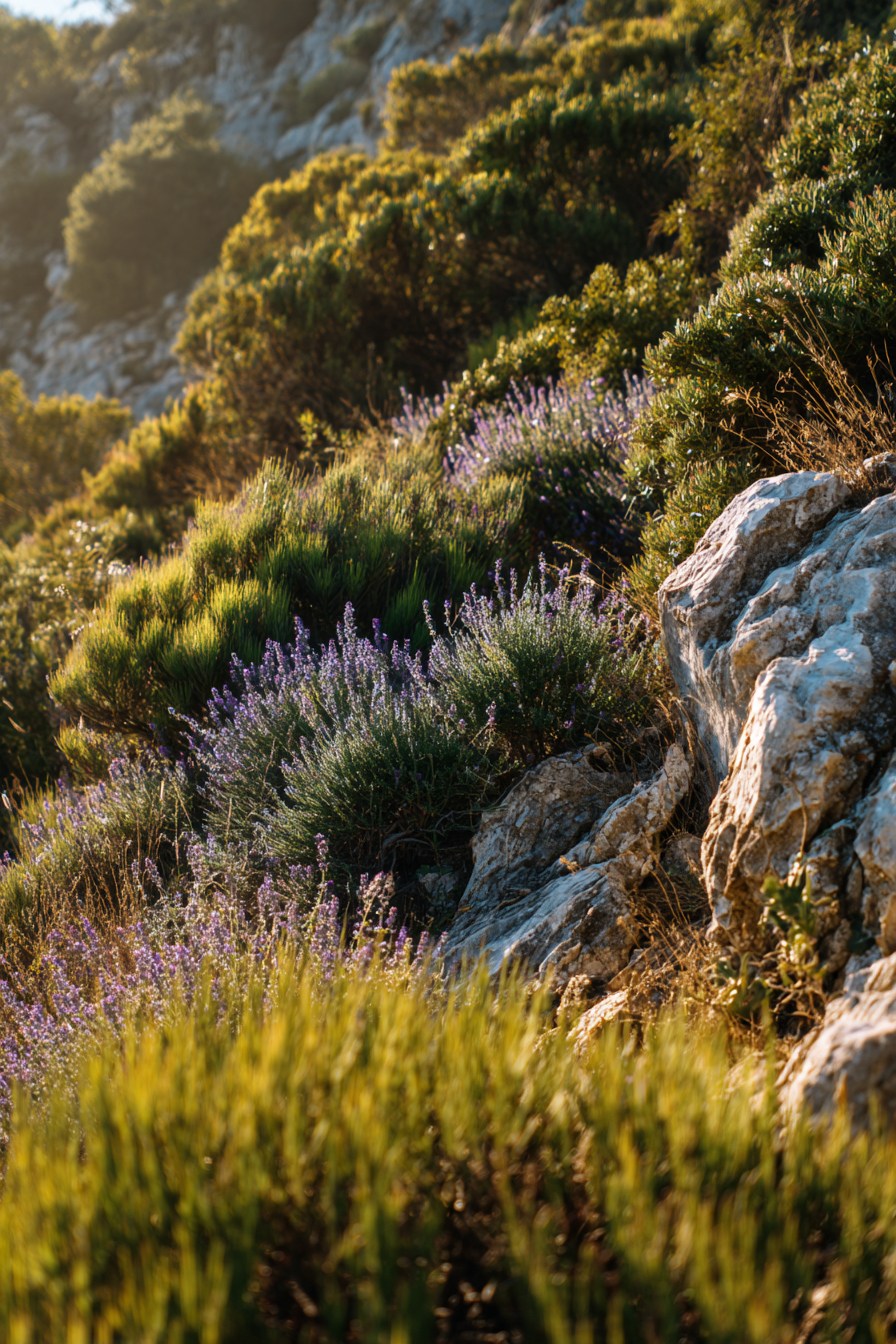
The scents and textures of the Mediterranean are embedded in the architecture, extending the sense of place into every courtyard.
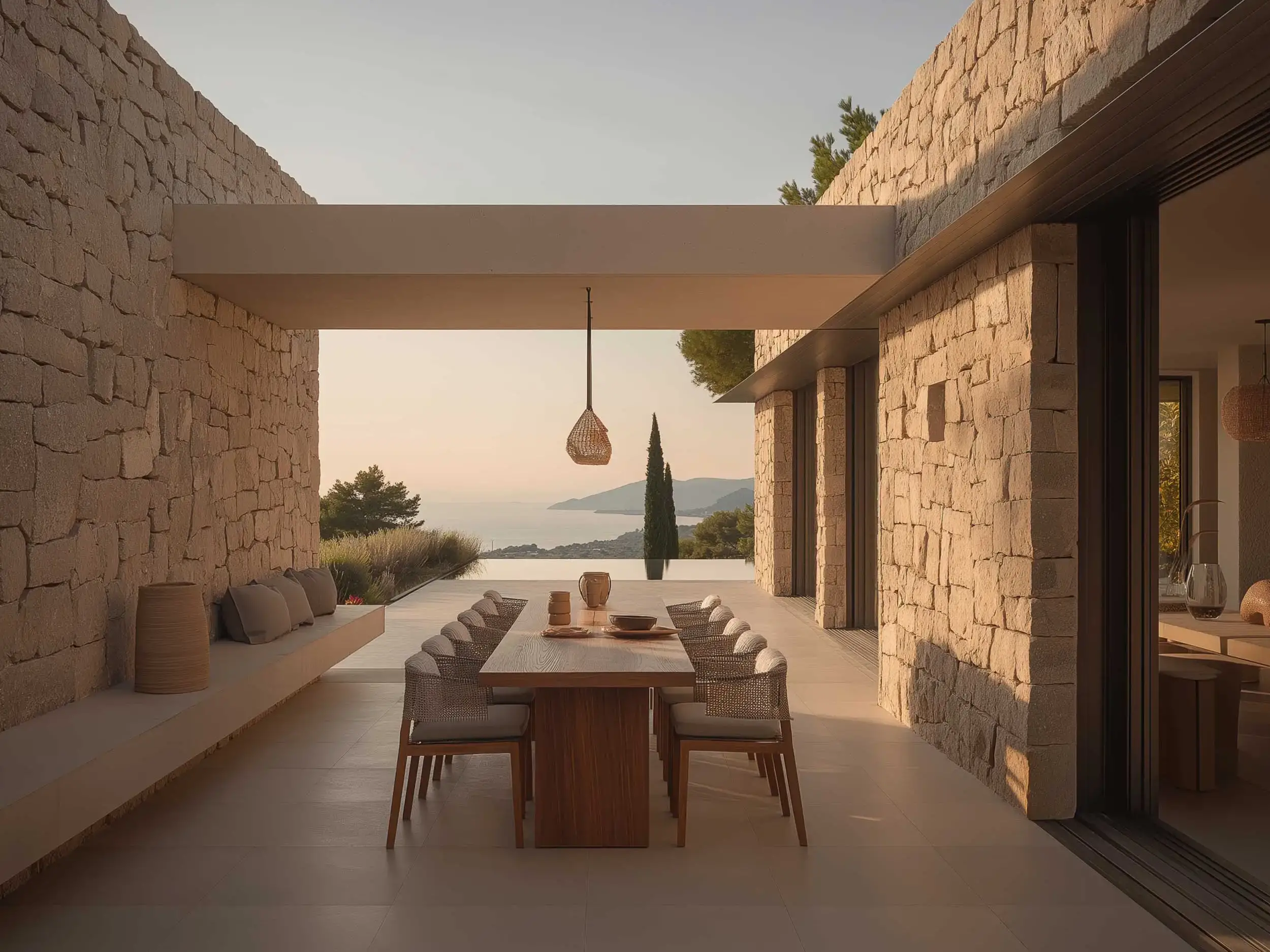
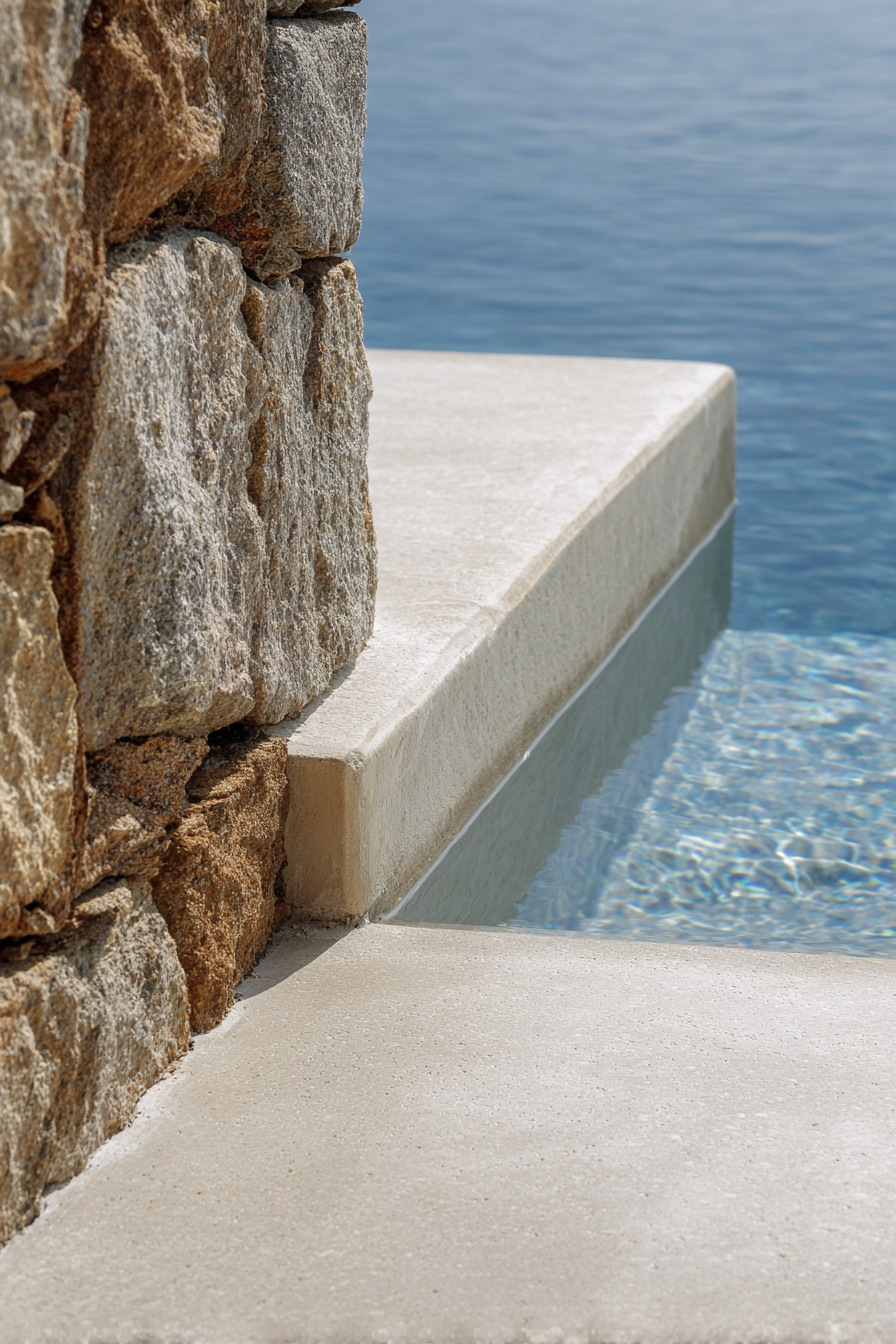
Boundaries are softened where architecture meets water, creating moments of stillness that echo the calm horizons of Aiguablava.
The essence of the project lies in its relationship with light and horizon. Openings are deliberate rather than abundant, framing views of the Mediterranean in moments of intensity rather than continuity. From within, the house becomes an instrument for observing the sea: at times expansive, at times fragmentary, but always present.
Shade is treated as carefully as light. Porches extend living spaces outward, filtering the harsh sun and providing shelter for long summer afternoons. Pools of water amplify the experience, reflecting sky and pine, cooling the air, and softening the arid heat. In this way, the residence is not a static composition but a series of atmospheres—bright, shaded, reflected—changing constantly with the hours and seasons.
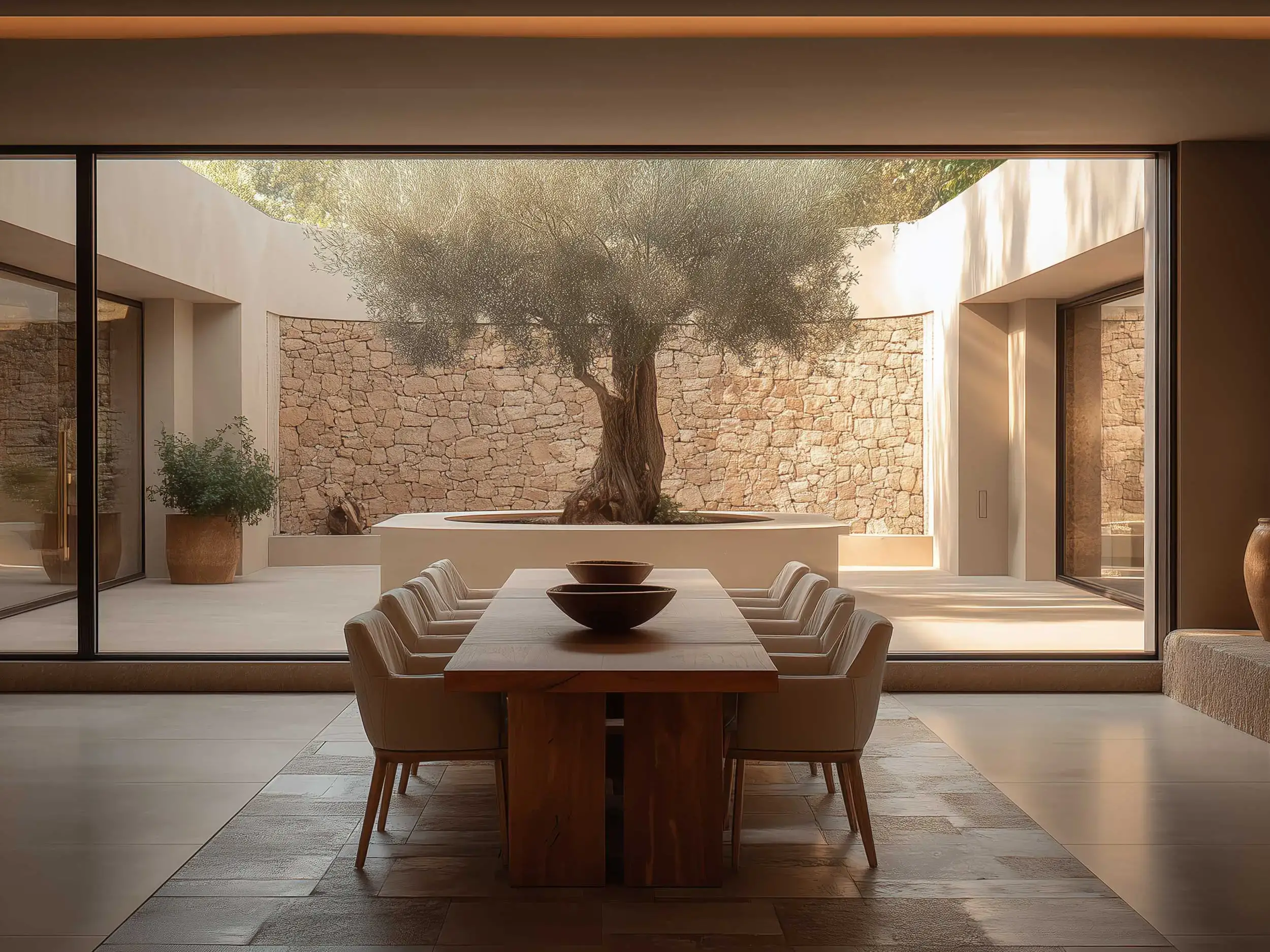
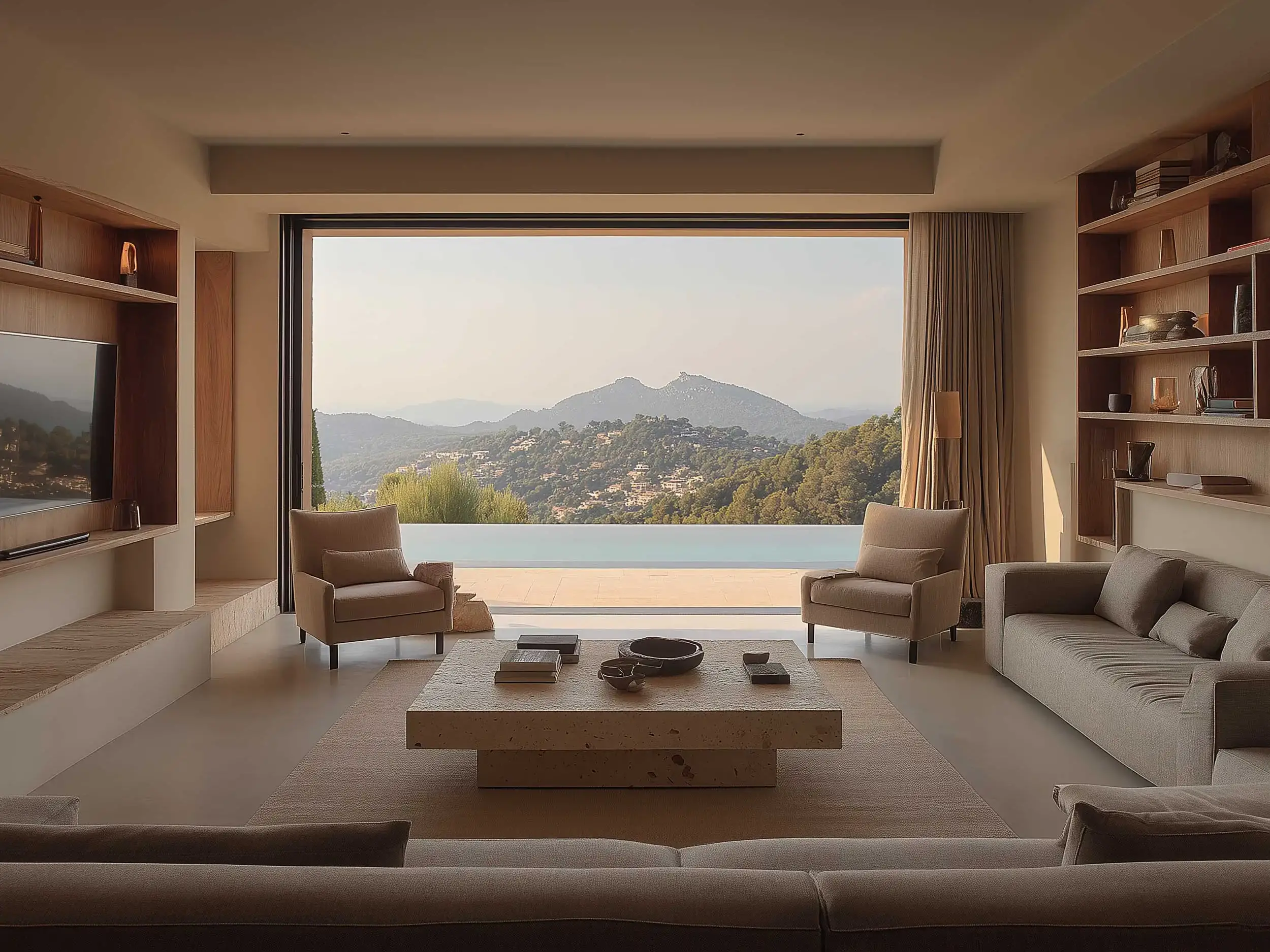
“
Patios are the true living rooms here—spaces of shade and breeze, at once protective and open.”
- POL FEMENIAS (ARCHITECT)
The Aiguablava Heights proposes a way of inhabiting the Costa Brava that is both contemporary and timeless. It is a retreat where luxury is found not in spectacle, but in silence, in the restraint of materials, and in the profound connection between house and landscape. To live here is to inhabit a rhythm defined by shade, breeze, and horizon, where the architecture quietly amplifies the presence of nature rather than competing with it.
This quiet luxury lies in balance: the balance of protection and openness, of permanence and impermanence, of stone and light. The residence is not only a dwelling but a framework for living in harmony with the Mediterranean. It is a house that disappears into its hillside, yet opens to the vastness of the horizon—a place of both refuge and release, rooted in the essence of Aiguablava.
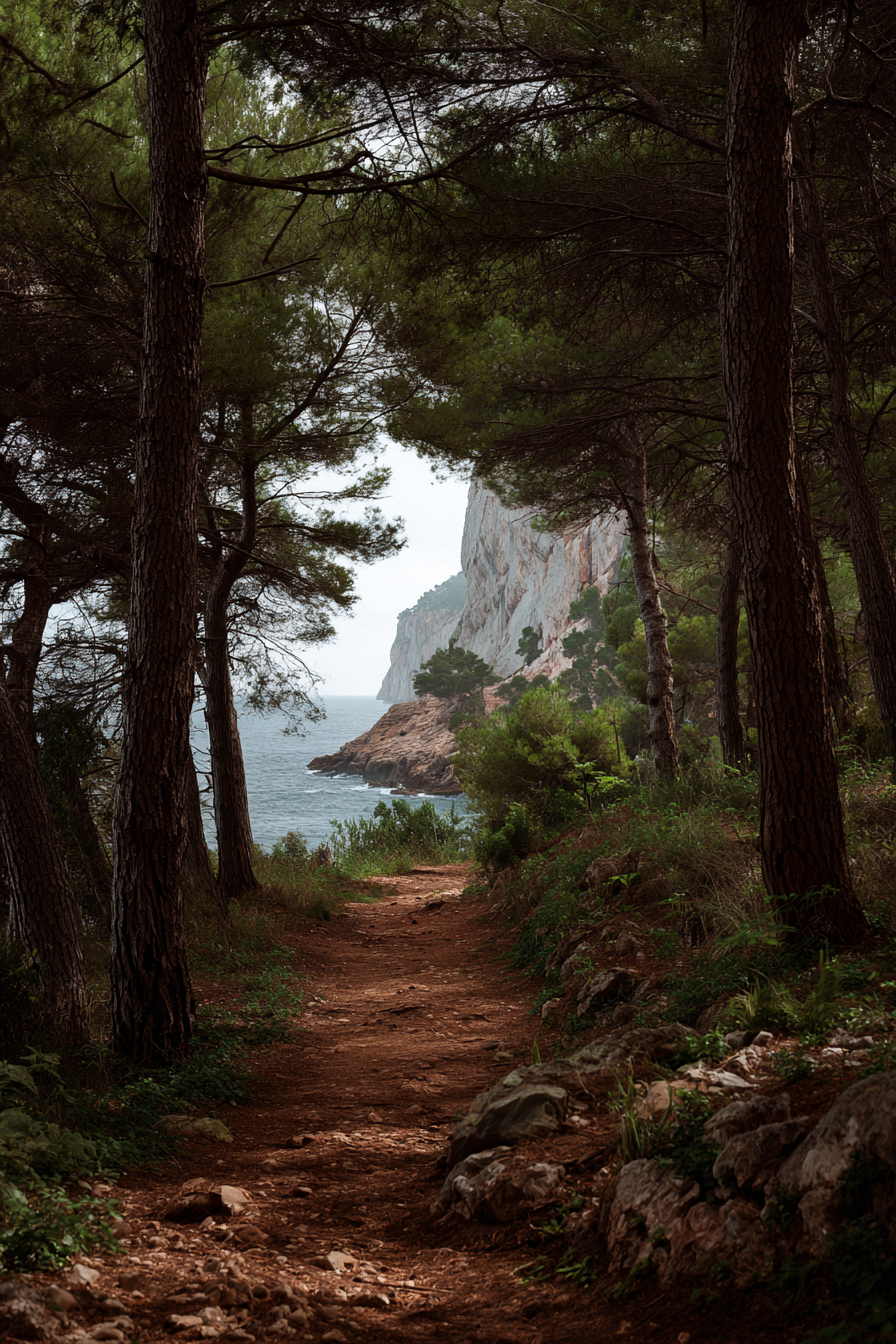
Architecture here mirrors the topography—offering shaded refuge that gradually unfolds into expansive views of the Mediterranean.
